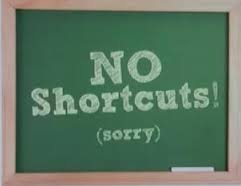Tim, a software sales rep, had been having a rough day. He’d been bombarded with questions from several customers and had gotten behind on a proposal that he needed to finish before the end of the day. Then he got a call from Gene, a prospect who introduced himself by saying, “I’ve heard great things about your accounting software package. I saw a demo about a year ago, and was not in a position to purchase it at the time, but since then it’s become very apparent that I need to integrate it immediately into my system.”
“Wow,” thought Tim. “This will be easy. It’s about time something went right today.”
Then Gene said, “I need to know about pricing and availability. And tech support is important, too. Tell me how that works.”
Tim went into his pitch. He discussed tech support in detail, covered availability and other options, and explained that the price was $8000 with 30-day terms.
Gene’s response was unexpected. He said that $8000 was quite a hefty price tag and he needed a couple of days to consider the purchase more carefully. He’d call Tim back next week.
Tim did a double take. “What just happened?” he thought. “This sale was in the bag, a sure thing, and now he’s thinking it over? He said he needed the software right away.” And that was the end of the call.
Diagnosis: Tim got lazy, plain and simple. He thought Gene was sold. All he had to do was give Gene the info he needed, then write it up. He got conned into doing a presentation without getting Gene to demonstrate why he was so excited about buying the software. The entire transaction was conducted at the intellectual level.
Prescription: Don’t be lured into taking shortcuts. Don’t mistake the prospect’s enthusiasm for your product or service as a sure sale. Take the time to qualify the prospect and make sure he’s real before you make your presentation. In Tim’s case, a couple of quick questions would have made a world of difference. He might have said, “Before we discuss pricing, help me understand why this software is so important. I want to make sure the application is correct for you. Mind if I ask you a couple of questions?” Of course, you’re probing for pain and one of the most important things to find out is the financial impact of not implementing a solution. Having discovered the financial impact and, assuming it was significant, you will find that the cost of the solution disappears as an objection.
Don’t take shortcuts! Don’t assume anything. Get the prospect involved at an emotional, not an intellectual, level. Use the system, qualify completely, and get the sale.







